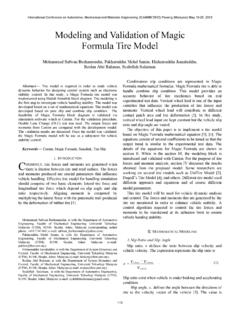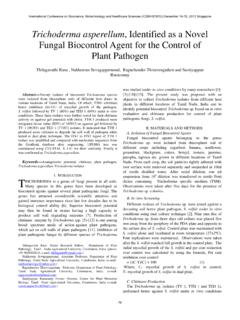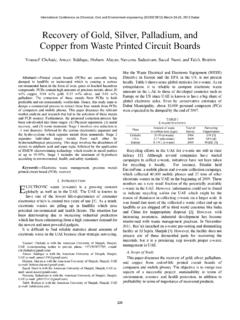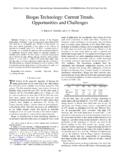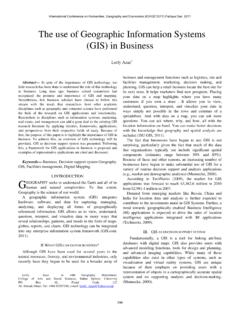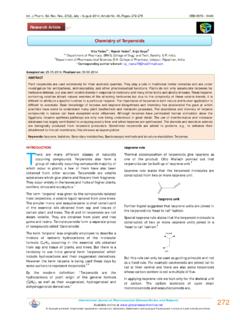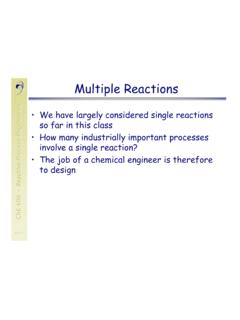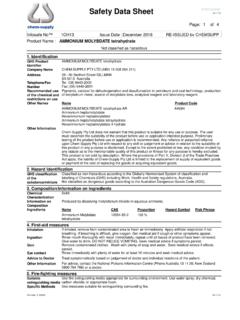Transcription of Production and Application of Calcined Coke In Rotary ...
1 Abstract Calcined coke is the best material for making carbon anodes for smelting of alumina to aluminum. Petroleum coke is usually Calcined in a gas-fired Rotary kiln or Rotary hearth at high temperatures, around 1200 to 1450 C, to remove moisture, drive off volatile matters, increase the density of the coke , increase physical strength, and electrical conductivity of the material. Rotary kilns have been used successfully for many years to produce Calcined coke for the aluminium industry and they offer a high level of automation, performance and flexibility. Shaft calciners make a high bulk density, coarse particle size product and several papers have been published recently highlighting these benefits. This paper presents a comparison of the operation of two different kiln and calcining technologies as a product quality and process performance.
2 Several misconceptions about the technologies related to operability, product quality and their ability to handle a wide range of green coke and calcinations processes. All technologies used in a complimentary manner in the future. Density, Size and Reactivity of coke and Impurity are most effective parameters on Calcined coke quality. Keywords Calcination, coke , Rotary Kiln, petroleum I. INTRODUCTION ALCINED Petroleum coke (CPC) is manufactured from Raw Petroleum coke (RPC) by the process known as high temperature pyrolysis. Several papers have been published over the last 5 years comparing Rotary kiln calciners to shaft calciners [1,2,3,4]. Shaft calciners are common in China but there are very few operating outside of China.
3 Rotary kilns on the other hand, have been the technology of choice for most of the rest of the world and the technology is generally well known and understood. The industry trend is towards lower real density and several papers have been published on this recently [5, 6]. The process is carried out in a Rotary kiln at temperatures exceeding 1300 deg C. Calcination of CPC is essentially a high temperature treatment in which the carbon to hydrogen ratio of RPC is increased from 20 to 1000 and above. Calcination is achieved by complete demoisturisation and Sharifi Kh. is with the Refining Technology Development Division Research institute of petroleum Industry, National Iranian Oil Company, Tehran, Iran, (phone: +98 (21)48252097 fax: +98 (21) 44739738; e-mail: Rohani A.)
4 A. was with Research institute of petroleum Industry, National Iranian Oil Company, Tehran, Iran. He is now with the Refining Division, (e-mail: Golpasha R. is with the Refining Technology Development Division, Research institute of petroleum Industry, National Iranian Oil Company, Tehran, Iran. (e-mail: dehydrogenation of RPC under controlled conditions. During the process molecular rearrangement takes place making the CPC electrically conductive, an essential property required for Aluminium smelting. Raw Petroleum coke needs to be Calcined in order to meet the requirements for producing Graphite Electrode used in steel-smelting or Anode Paste used aluminum and magnesium. The calcination temperature will usually be about 1300 C.))
5 This is done to get rid of the volatility, which will help to reduce the content of hydrogen and increase the graphitization degree of Petroleum coke products so as to enhance the strength of high temperature and heat resistance and to improve conductivity of Graphite Electrode. The following table illustrates the difference between fuel grade green coke and coke intended for aluminum anode grade before and after calcining. These two grades (fuel and Calcined ) are representative of the two extremes of petroleum coke composition. TABLE I PROPERTIES OF GREEN AND Calcined coke A diagram of typical kiln calciner is shown in figure2. Calcined coke is produced from delayed process green coke by a process of further heating at temperatures up to 1200oC.
6 The product of calcining removes virtually the entire residual hydrocarbon including PAHs and the result is a dustier material. Calcined coke is characterized as either anode-grade coke or graphite needle-grade coke depending upon its physical and chemical characteristics with needle-grade coke having a higher purity than anode-grade coke which is used in electric furnaces in aluminum and steel smelting. Petroleum coke calcining may be achieved in a Rotary kiln, shaft calciner and Rotary hearth. A Rotary kiln is a device that supplies tremendous amounts of heat in order to change the chemical composition of an object. It is made up of a strong reinforced steel outer shell that is coated with a heat-resistant inner lining, support rollers and a drive gear to keep the contents in a continuous rotating motion and internal heat exchangers capable of producing Production and Application of Calcined coke In Rotary Kilns Calciners Khashayar Sharifi, Aliasghar Rohani, and Rahmatollah Golpasha C 3rd International Conference on Chemical, Ecology and Environmental Sciences (ICEES'2014) March 19-20, 2014 Abu Dhabi (UAE)103 temperatures well over 1500 degrees Celsius.
7 Rotary kilns will sit slightly at an angle so that the inner contents will be sifted downwards toward the heat source and allow for any evaporative gasses to escape from the top during the process through sealed ductwork. The contents are then sorted and ejected through an opening in the lower end of the device that automatically sorts processed materials and waste into separate bins. Other common terms to describe such a device may be a Rotary kiln incinerator or a Rotary kiln dryer. The kiln is a cylindrical vessel, inclined slightly to the horizontal, which is rotated slowly about its axis. The material to be processed is fed into the upper end of the cylinder. As the kiln rotates, material gradually moves down towards the lower end, and may undergo a certain amount of stirring and mixing.
8 Hot gases pass along the kiln, sometimes in the same direction as the process material, but usually in the opposite direction. Fig. 1 Diagram of counter current calciner II. USE OF Calcined PETROLEUM coke Petroleum coke is used as a source of energy, or as a source of carbon for industrial Application . Fuel grade petcoke represents nearly 80 percent of worldwide petcoke Production and is a source of fuel for cement kilns and electric power plants. Calcined petcoke (CPC) has the highest carbon purity and is used to manufacture energy, as well as in aluminum, graphite electrode, steel, titanium dioxide and other carbon consuming industries. Aluminum: Worldwide, more than 85 percent of all CPC is used to produce anodes for smelting alumina into aluminum via the Hall-H roult process, and there is no other commercially viable method to produce primary aluminum (bauxite ore is refined into alumina via the Bayer Process at alumina refineries).
9 Anthracite coal was originally used as the carbon source; however, CPC supplanted anthracite as soon as CPC became commercially available due to its superior combination of electrical conductivity, resistance to chemical and physical degradation in the smelting pot, higher carbon content, and low Dioxide: Calcined petcoke is used in the Production of titanium dioxide (TiO2), a naturally occurring mineral used as a pigment for plastic, paint, sunscreen and food coloring. Two significant uses of titanium dioxide are as a substitute for lead in paint and as a whitener for paper. Steel: Petcoke is a partial replacement for metallurgical coal as a feedstock for coke oven batteries, and as a partial substitute for pulverized coal directly injected into blast furnaces.
10 Petcoke that is specially produced to have a needle-like crystal structure is called needle coke . Needle coke is used to produce the electrodes used in steel Production . No other material has needle coke s combination of electrical conductivity and physical properties required for these electrodes. Calcined petcoke is also used as a recarburizer in the steel industry. Recarburizers are used to make minor adjustments to carbon content to ensure that each batch of steel meets specifications for carbon content. For other uses Calcined petcoke is used in lime Production . lime is used in many industrial processes including steel Production . CPC is gasified to produce ammonia and urea ammonium nitrate, which is then used in fertilizer Production , and by pulp and paper mills.

